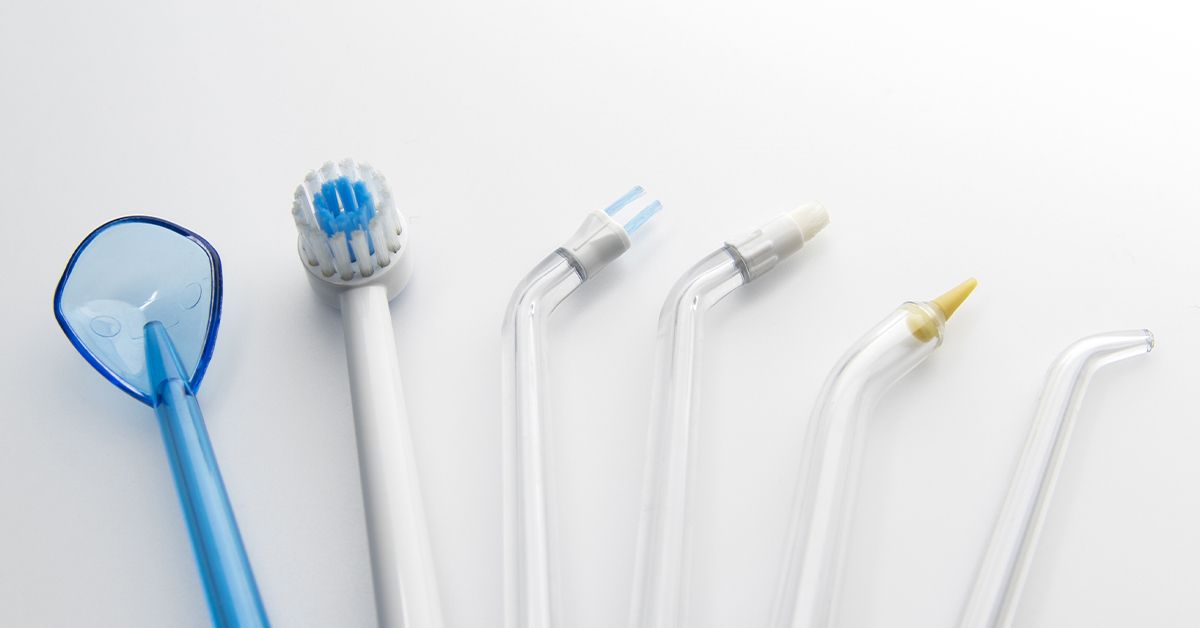
Marco Island Dentist Compares Flossing Versus Water Pik
You’ve undoubtedly noticed that dental professionals tend to ask whether or not you floss your teeth regularly. The question makes sense given that regular flossing is considered an integral component of oral care on par with regular brushing. That’s because flossing is effective at cleaning food particles, plaque, and bacteria between the teeth where a toothbrush’s bristles don’t reach.
Sometimes, patients at our Marco Island, Florida dental office respond to our question about regular flossing by asking whether a water pik counts. It’s a good question because water piks—also referred to as oral irrigators, water flossers, and dental water jets—effectively clean the spaces between the teeth, while also giving the gums a therapeutic gentle massage. As for the question of whether it “counts,” as equal to flossing, our response tends to be a conservative “maybe.” That’s because the question of which one is more effective at cleaning food particles, plaque, and bacteria between teeth is open to variables and research has not conclusively ruled one better than the other.
In short, both have proven to be effective oral health care tools, and we would not discourage the use of either. Let’s take a closer look at both.
Flossing is a Tried and True Dental Care Technique
The first known modern usage of dental floss is attributed to New Orleans dentist Levi Spear, who produced a type of silk floss in 1815 that he recommended be used as part of daily teeth cleaning. The Codman and Shutleff Company produced the first commercially available silk dental floss in 1882, but floss did not enjoy widespread usage until the 1940s, when nylon replaced silk. Not only was nylon more abrasion resistant and elastic than silk, but it allowed for a wax coating for smoother flossing. Nylon remains the primary floss material today, and along with dental tape, you can also find a wide variety of floss types based on thickness, flavors, and textures.
Dentist Meets Hydraulic Engineer
The first oral irrigator was invented by a Colorado dentist in collaboration with a patient who was a hydraulic engineer. That 1962 teamwork resulted in the first Waterpik® water flosser, and the founding of Water Pik, Inc., the world’s largest producer of oral irrigators. There are literally dozens of different types of water piks to choose from—including a combination toothbrush-water flosser—but they all work by the same action. That is by directing a stream of high-pressure pulsating water along the gums and between teeth.
So, Which One is Right for Me?
If you include flossing, the use of a water pik, or both as part of your daily oral health regimen, your dentist will likely be pleased, as you are being proactive with your dental care and helping reduce the plaque and bacteria that lead to gum disease. There are pros and cons to using either and you could make your choice based on scaling them. Flossing is cheaper, easier, and more portable than oral irrigation, but a water pik may reach areas that cannot be reached with floss. In fact, a water pik is typically considered the better choice for those with braces, bridges and other dental work, which tends to impede the smooth flow of flossing. It also might prove the better choice for those with a condition, such as arthritis, that makes it difficult to maneuver the floss through and around the teeth.
Learn More About Flossing and Water Piks at Island Tower Dentistry
Bottom line is that the use of a water pik versus dental floss is highly subjective and you should utilize the one that seems to work the best for you. If you’re not sure which one seems to be the best choice, ask your dentist. The dental care professionals at Island Tower Dentistry stand ready to help you assess which one might prove most effective at keeping your teeth and gums clear of bacteria and plaque. To learn more, contact us today at 239-394-1004 to make an appointment!